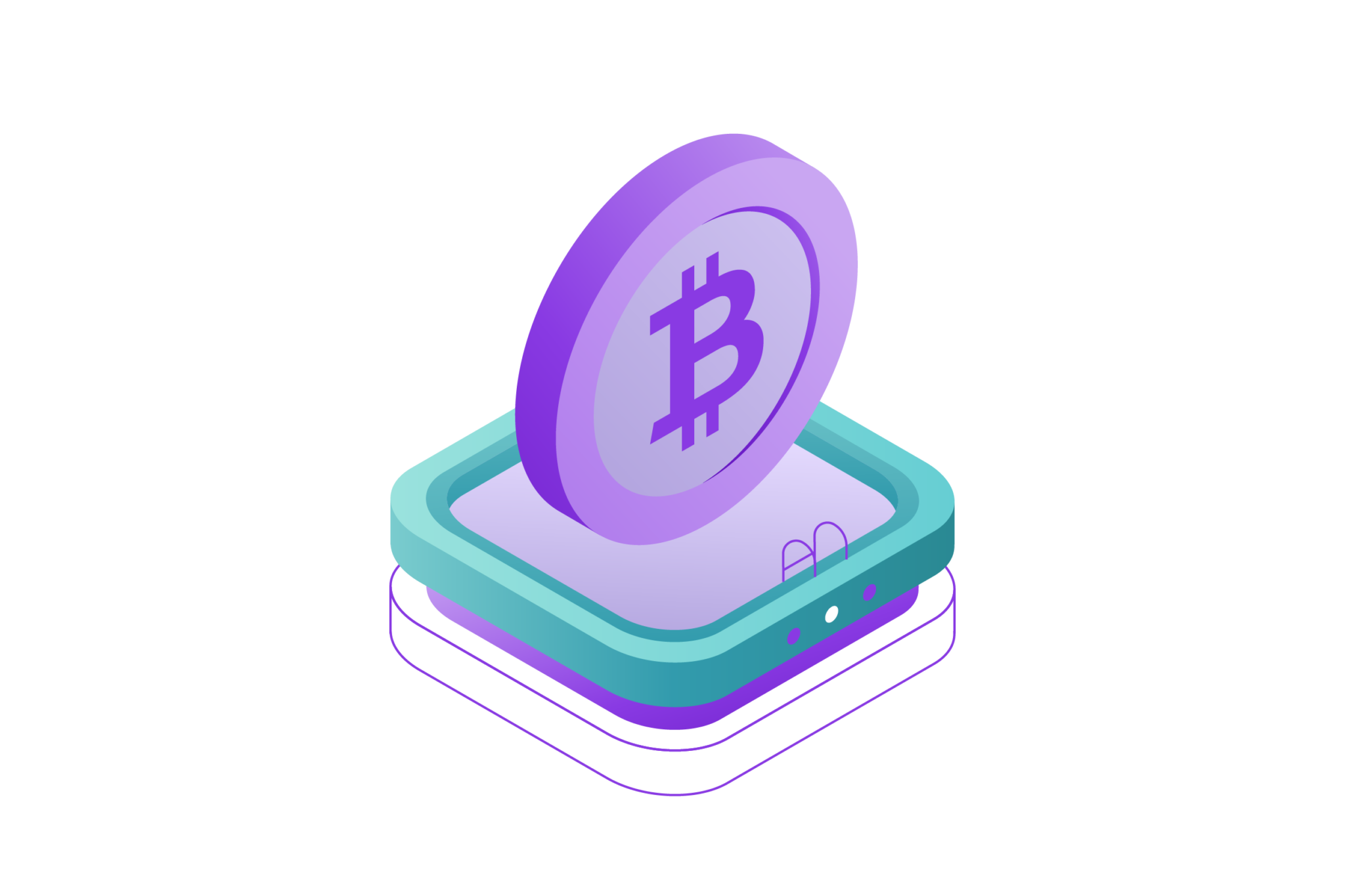
Cryptocurrency has revolutionized the financial world, bringing with it new terms and concepts that can be overwhelming. One such term you might have come across is LP, which stands for Liquidity Provider. But what exactly is an LP in the context of crypto?
In simple terms, a Liquidity Provider is an entity or individual that supplies capital to a market, specifically in decentralized finance (DeFi). This capital is used to facilitate trading and ensure that there is enough liquidity in the market, making it easier for buyers and sellers to execute trades.
Understanding the role and function of Liquidity Providers is crucial for anyone looking to delve deeper into the world of cryptocurrency. In this article, we will take a comprehensive look at what an LP is, how it works, the benefits and risks involved, and how you can become one.
What Is Liquidity Provider in Crypto?

In the world of traditional finance, liquidity is the ease with which an asset can be bought or sold in the market without affecting its price. Liquidity is crucial because it ensures that there are enough buyers and sellers, making the market more stable and efficient. The same principle applies to the cryptocurrency market, but with some unique twists.
In cryptocurrency, a Liquidity Provider (LP) is an individual or entity that supplies funds to a decentralized exchange’s liquidity pool. A liquidity pool is a smart contract where users can lock their funds. These funds are then used to facilitate trading on the exchange, ensuring there is enough liquidity for the trading pairs available.
Also Read: The Best Crypto On-Ramp Platforms for 2024
Liquidity Providers earn rewards for their contribution. These rewards typically come in the form of a portion of the transaction fees generated by the trades occurring in the liquidity pool. This mechanism not only ensures the availability of liquidity but also incentivizes participants to lock their assets in the pool.
How Does a Liquidity Provider Work?

Becoming a Liquidity Provider (LP) involves a few steps, but the process is relatively straightforward. Here’s a simplified breakdown of how it works:
Step 1: Choose a Platform
First, you need to select a decentralized exchange (DEX) that offers liquidity pools. Popular options include Uniswap, SushiSwap, and Balancer. Each platform has its own set of rules and incentives, so it’s essential to do your research and choose the one that aligns with your goals.
Step 2: Deposit Funds into a Liquidity Pool
Once you’ve chosen a platform, the next step is to deposit your assets into a liquidity pool. Typically, you’ll need to deposit a pair of tokens. For example, in a USDT/ETH pool, you would deposit an equal value of USDT and ETH. The ratio of these tokens in the pool helps to determine their price.
Step 3: Earn Rewards
After depositing your funds, you become a part of the liquidity pool, and the smart contract takes over. Your assets are used to facilitate trades on the DEX, and in return, you earn a share of the transaction fees generated. Some platforms also offer additional incentives like governance tokens or rewards in other cryptocurrencies.
Step 4: Monitor and Withdraw
Being an LP requires occasional monitoring. The value of your deposited assets can change due to price fluctuations and impermanent loss. You can withdraw your funds at any time, but it’s crucial to consider the market conditions and the potential impact on your earnings.
Becoming a liquidity provider can be a rewarding venture, but it’s essential to understand the mechanics and stay informed about market conditions. With the right approach, you can contribute to the stability of the crypto market while earning passive income.
Benefits of Being a Liquidity Provider

Becoming a Liquidity Provider (LP) offers several advantages, making it an attractive option for many cryptocurrency enthusiasts. Here are some of the key benefits:
Passive Income
One of the main benefits of being an LP is the ability to earn passive income. When you deposit your assets into a liquidity pool, you earn a share of the transaction fees generated by trades within that pool. This income is earned without active trading, making it a relatively hands-off investment strategy. Over time, as trading volume increases, the cumulative earnings can be significant. For individuals looking to generate income without the need for constant market monitoring or active management, being an LP presents a viable option.
Incentives and Rewards
Many decentralized exchanges offer additional incentives to LPs. These can include governance tokens, which give holders voting rights on protocol decisions, or extra rewards paid in the platform’s native token. These incentives can significantly boost the overall returns for liquidity providers. For example, platforms like Uniswap and SushiSwap provide LPs with governance tokens that can appreciate in value and grant the holder a say in the platform’s future. These additional rewards not only enhance the financial benefits but also encourage active participation and investment in the platform’s ecosystem.
Contribution to Market Stability
By providing liquidity, LPs play a crucial role in stabilizing the cryptocurrency market. Their contributions ensure there is enough liquidity for buyers and sellers, which reduces volatility and makes the market more efficient. This stability can attract more traders and investors, further enhancing the ecosystem. Stable markets are crucial for the growth and adoption of cryptocurrency, and LPs are at the heart of this stability. By reducing slippage and ensuring smoother transactions, LPs help create a more reliable and user-friendly trading environment.
Exposure to Different Assets
Liquidity pools often require the provision of a pair of assets. This means that as an LP, you gain exposure to different cryptocurrencies, which can diversify your investment portfolio. This diversification can potentially reduce risk and improve overall returns. For instance, participating in a pool with ETH and USDT allows you to benefit from the movements in both assets. Diversification is a well-known risk management strategy, and by being an LP, you inherently diversify your holdings, which can protect your portfolio against market volatility.
Community Engagement
Being an LP also means being part of a growing community of DeFi enthusiasts. Engaging with this community can provide valuable insights, networking opportunities, and a sense of contribution to the decentralized finance movement. Many DeFi platforms have active communities where members share tips, strategies, and insights. Being part of this community can enhance your understanding of the market, help you stay updated on the latest trends, and provide a support network of like-minded individuals.
Overall, the benefits of being a liquidity provider extend beyond just financial gains. It offers a way to earn passive income, gain exposure to multiple assets, and contribute to the stability and growth of the cryptocurrency ecosystem. For those interested in DeFi and the broader crypto space, becoming an LP is a compelling option.
Risks Associated with Liquidity Providing
While there are many benefits to becoming a Liquidity Provider (LP), it is essential to understand the associated risks. Being aware of these risks can help you make informed decisions and manage your investments more effectively.
Impermanent Loss
Impermanent loss is one of the most significant risks LPs face. This occurs when the value of the assets you have deposited into a liquidity pool changes compared to their value if you had held them outside the pool. The larger the price change, the more significant the impermanent loss.
For example, if you provide liquidity for an ETH/USDT pair and the price of ETH increases significantly, the algorithm of the liquidity pool will adjust the ratio of ETH and USDT to maintain balance. As a result, you might end up with less ETH than you initially deposited, which could lead to a loss compared to simply holding your assets.
Market Volatility
Cryptocurrency markets are known for their high volatility. Sudden price swings can impact the value of your deposited assets and lead to potential losses. Volatility can also increase the frequency of impermanent loss. Additionally, in highly volatile markets, the fees earned from providing liquidity might not be sufficient to offset the losses incurred from price fluctuations. It’s essential to consider the volatility of the assets in the pool and the overall market conditions before becoming an LP.
Smart Contract Risks
Liquidity pools operate through smart contracts, which are self-executing contracts with the terms of the agreement directly written into code. While smart contracts are designed to be secure, they are not immune to bugs or vulnerabilities. A flaw in the smart contract could be exploited by hackers, leading to a loss of funds. Although reputable platforms undergo rigorous security audits, the risk of smart contract failure cannot be entirely eliminated. As an LP, it’s crucial to choose platforms with a strong security track record and to stay informed about any potential vulnerabilities.
Regulatory Risks
The regulatory landscape for cryptocurrencies and DeFi platforms is still evolving. Changes in regulations or new legal requirements could impact the operation of liquidity pools and the assets you have deposited. For example, new regulations might impose restrictions on certain types of transactions or require additional compliance measures, which could affect your ability to provide liquidity or withdraw your assets. Staying updated on regulatory developments and understanding the legal environment in your jurisdiction is essential for mitigating these risks.
Withdrawal Risks
In some cases, withdrawing your assets from a liquidity pool might not be as straightforward as expected. Factors such as high transaction fees (especially on networks like Ethereum during times of congestion) or lock-up periods imposed by certain platforms can delay or complicate the withdrawal process. It’s important to be aware of the specific withdrawal conditions of the platform you are using and to plan your liquidity provision strategy accordingly.
Despite these risks, many individuals and institutions continue to provide liquidity because the potential rewards can outweigh the dangers. By understanding and managing these risks, you can make more informed decisions and optimize your strategy as a Liquidity Provider.
Also Read: Mastering Event Driven Trading: A Comprehensive Guide
How to Become a Liquidity Provider
Becoming a Liquidity Provider (LP) in the cryptocurrency space can be a rewarding endeavor. Here are the steps you need to follow to start providing liquidity:
Step 1: Choose a Decentralized Exchange (DEX)
The first step is to select a decentralized exchange (DEX) that offers liquidity pools. Popular DEXs include Uniswap, SushiSwap, and Balancer. Each platform has its unique features, fee structures, and rewards, so it’s essential to research and choose the one that best fits your investment strategy.
Step 2: Set Up a Cryptocurrency Wallet
To interact with a DEX, you will need a cryptocurrency wallet. Wallets like MetaMask, Trust Wallet, and Coinbase Wallet are commonly used. Ensure that your wallet is compatible with the chosen DEX and that it supports the tokens you plan to provide as liquidity.
Step 3: Fund Your Wallet
Once your wallet is set up, you need to fund it with the tokens you plan to deposit into the liquidity pool. Typically, you will need a pair of tokens, such as ETH and USDT. Ensure you have enough of each token to meet the requirements of the liquidity pool you are joining. Additionally, keep some extra ETH or the native token of the blockchain for transaction fees.
Step 4: Connect Your Wallet to the DEX
Navigate to the website of the DEX you have chosen and connect your wallet. This usually involves clicking a “Connect Wallet” button and following the on-screen instructions. Make sure you are on the official site to avoid phishing attempts.
Step 5: Add Liquidity to the Pool
Once your wallet is connected, navigate to the liquidity section of the DEX. Select the liquidity pool you want to join and enter the amount of each token you wish to deposit. The DEX will show you the ratio of the tokens and the potential earnings. Confirm the transaction and approve it in your wallet. The tokens will be transferred to the pool, and you will receive liquidity provider (LP) tokens representing your share in the pool.
Step 6: Monitor Your Investment
After depositing your funds, it’s important to monitor your investment regularly. Keep an eye on the performance of the liquidity pool, the transaction fees generated, and any changes in the value of your assets. Some DEXs offer dashboards that provide detailed information about your liquidity position and earnings.
Step 7: Withdraw Your Funds
You can withdraw your funds from the liquidity pool at any time. To do this, navigate to the liquidity section of the DEX, select the pool, and enter the amount you wish to withdraw. Confirm the transaction and approve it in your wallet. The tokens will be transferred back to your wallet, along with any earned fees. Remember to account for potential transaction fees and the impact of impermanent loss when withdrawing your funds.
Conclusion
Liquidity providers (LPs) play a vital role in the cryptocurrency ecosystem, particularly within decentralized finance (DeFi). By contributing to liquidity pools, LPs help ensure that decentralized exchanges (DEXs) function smoothly and efficiently. They earn passive income through transaction fees and additional rewards offered by many platforms, while also contributing to market stability and gaining exposure to various cryptocurrencies.
However, it’s crucial to be aware of the associated risks, such as impermanent loss, market volatility, and smart contract vulnerabilities. Understanding these risks and staying informed about the platforms and assets you engage with can help mitigate potential downsides. Careful planning and regular monitoring are essential for making informed decisions and managing your investments effectively.
In summary, providing liquidity in the crypto market offers significant rewards and the chance to be part of the innovative DeFi movement, despite the inherent risks. By weighing the pros and cons and staying informed, you can navigate this space successfully and potentially benefit from the dynamic world of cryptocurrency.
Disclaimer: The information provided by Quant Matter in this article is intended for general informational purposes and does not reflect the company’s opinion. It is not intended as investment advice or a recommendation. Readers are strongly advised to conduct their own thorough research and consult with a qualified financial advisor before making any financial decisions.

Joshua Soriano
As an author, I bring clarity to the complex intersections of technology and finance. My focus is on unraveling the complexities of using data science and machine learning in the cryptocurrency market, aiming to make the principles of quantitative trading understandable for everyone. Through my writing, I invite readers to explore how cutting-edge technology can be applied to make informed decisions in the fast-paced world of crypto trading, simplifying advanced concepts into engaging and accessible narratives.
- Joshua Soriano#molongui-disabled-link
- Joshua Soriano#molongui-disabled-link
- Joshua Soriano#molongui-disabled-link
- Joshua Soriano#molongui-disabled-link
